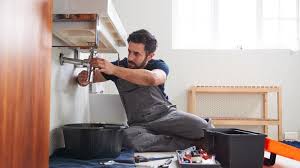Plumbing is an essential part of maintaining a safe and comfortable home. Understanding some basic plumbing tips can save you time, money, and stress. This article will guide you through everything you need to know about maintaining your home’s plumbing system.
Introduction
Plumbing issues can range from minor annoyances to major disasters. Knowing how to handle common problems and maintain your plumbing system can help prevent costly repairs and keep your home running smoothly.
Why Plumbing Maintenance is Important
Regular plumbing maintenance can:
- Prevent leaks and water damage
- Improve water quality
- Extend the life of your plumbing system
- Save money on repairs
Basic Plumbing Tips for Homeowners
1. Know Your Plumbing System
Understanding your home’s plumbing system is the first step in preventing problems. Here are some key components to be aware of:
- Main Water Shutoff Valve: Know where this is located and how to turn it off in case of a major leak.
- Water Meter: This measures your water usage and can help you detect leaks.
- Water Heater: Regularly check and maintain your water heater to ensure it operates efficiently.
- Pipes and Drains: Be familiar with the location of your pipes and drains to quickly address any issues.
2. Prevent Clogged Drains
Clogged drains are one of the most common plumbing issues. Preventing clogs can save you a lot of trouble. Here are some tips:
- Use Drain Screens: These help catch hair, food particles, and other debris before they enter your pipes.
- Avoid Pouring Grease Down the Drain: Grease can solidify in your pipes, causing blockages.
- Regular Cleaning: Use a mixture of baking soda and vinegar to keep your drains clean and free of buildup.
3. Fix Leaks Promptly
Even small leaks can cause big problems if left unchecked. Here’s how to handle them:
- Identify Leaks: Regularly check under sinks, around toilets, and behind appliances for any signs of leaks.
- Fix Faucets: A dripping faucet can waste a lot of water. Replace worn-out washers or O-rings to stop the drip.
- Seal Pipe Joints: Use the plumber’s tape or joint compound to seal any leaking pipe joints.
4. Maintain Your Water Heater
Your water heater is a crucial part of your plumbing system. Keep it in good working order with these tips:
- Flush the Tank Annually: This removes sediment buildup that can affect performance.
- Check the Anode Rod: This rod prevents rust inside the tank. Replace it if it’s heavily corroded.
- Set the Temperature: Keep the water heater set at 120°F to prevent scalding and save energy.
5. Insulate Pipes
Insulating your pipes can prevent them from freezing in the winter and reduce energy costs. Here’s how to do it:
- Use Pipe Insulation: Foam pipe insulation is easy to install and effective at keeping pipes warm.
- Focus on Exposed Pipes: Insulate pipes in unheated areas like basements, attics, and crawl spaces.
6. Be Prepared for Emergencies
Plumbing emergencies can happen at any time. Be prepared with these tips:
- Know How to Shut Off Water: Make sure everyone in your household knows how to turn off the main water supply.
- Keep Emergency Contacts Handy: Have the number of a reliable plumber saved in your phone.
- Stock Emergency Supplies: Keep a plunger, pipe wrench, and plumber’s tape on hand for quick fixes.
Common Plumbing Problems and Solutions
Leaky Faucets
Problem: A faucet that drips constantly can be annoying and wasteful.
Solution:
- Turn off the water supply to the faucet.
- Remove the faucet handle.
- Replace the washer or O-ring.
- Reassemble the faucet and turn the water back on.
Running Toilets
Problem: A toilet that runs continuously can waste a lot of water.
Solution:
- Check the flapper valve and replace it if it’s worn or damaged.
- Adjust the float arm to ensure the tank stops filling when it’s supposed to.
- Check for any leaks around the base of the toilet.
Low Water Pressure
Problem: Low water pressure can make everyday tasks like showering and washing dishes difficult.
Solution:
- Check for leaks in your pipes.
- Clean the aerators on your faucets to remove any buildup.
- Ensure your main water valve is fully open.
Clogged Toilets
Problem: A clogged toilet can cause water to overflow and damage your bathroom.
Solution:
- Use a plunger to try and clear the blockage.
- If that doesn’t work, use a toilet auger to reach and remove the clog.
- Avoid flushing anything other than toilet paper and human waste.
DIY Plumbing Projects
Some plumbing tasks can be done yourself without calling a professional. Here are a few simple projects:
Installing a New Faucet
- Gather Supplies: You’ll need a new faucet, plumber’s tape, and a wrench.
- Turn Off Water: Shut off the water supply to the sink.
- Remove Old Faucet: Disconnect the water lines and remove the old faucet.
- Install New Faucet: Follow the manufacturer’s instructions to install the new faucet.
- Turn On Water: Reconnect the water lines and turn on the water supply.
Replacing a Showerhead
- Remove Old Showerhead: Use a wrench to unscrew the old showerhead.
- Clean Threads: Clean the threads on the shower arm to remove any old tape or debris.
- Apply Plumber’s Tape: Wrap the plumber’s tape around the threads to ensure a tight seal.
- Install New Showerhead: Screw on the new showerhead and tighten it with a wrench.
- Check for Leaks: Turn on the water and check for any leaks around the new showerhead.
Fixing a Toilet Flapper
- Turn Off Water: Shut off the water supply to the toilet.
- Remove Tank Lid: Take off the tank lid to access the flapper.
- Replace Flapper: Disconnect the old flapper and attach the new one.
- Test Flush: Turn on the water and test the flush to ensure the flapper is working properly.
Table: Common Plumbing Tools and Their Uses
| Tool | Use |
|---|---|
| Plunger | Clearing clogs in toilets and drains |
| Pipe Wrench | Tightening and loosening pipe connections |
| Plumber’s Tape | Sealing pipe threads |
| Toilet Auger | Removing clogs from toilets |
| Faucet Wrench | Installing and removing faucets |
| Basin Wrench | Reaching nuts and bolts in tight spaces |
| Adjustable Wrench | General plumbing repairs |
Hiring a Professional Plumber
While many plumbing tasks can be done yourself, some situations require a professional. Here are some signs you need to call a plumber:
- Persistent Leaks: If you can’t stop a leak, it’s time to call a professional.
- Major Blockages: Stubborn clogs that won’t clear with a plunger or auger need expert attention.
- Water Heater Issues: If your water heater isn’t working properly, a plumber can diagnose and fix the problem.
- Burst Pipes: Burst pipes can cause significant water damage and require immediate professional repair.
Tips for Hiring a Plumber
When hiring a plumber, keep these tips in mind:
- Check Credentials: Ensure the plumber is licensed and insured.
- Get Estimates: Request written estimates from multiple plumbers before making a decision.
- Read Reviews: Look for reviews and testimonials from previous customers.
- Ask for References: A reputable plumber should be able to provide references.
Conclusion
Maintaining your home’s plumbing system prevents problems and ensures everything runs smoothly. Following these essential plumbing tips, you can tackle common issues, complete simple DIY projects, and know when to call a professional. Regular maintenance and prompt repairs are key to keeping your plumbing system in top condition.







